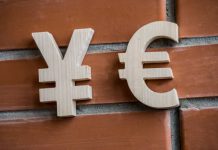After two consecutive bearish weeks, US equities started the current week off on the right foot, with all three benchmark indexes adding over 1% on Monday. The stock market was buoyed by vaccine hopes and several ongoing multibillion-dollar deals.
The S&P 500 closed 1.27% higher, with all of its 11 sectors ending the session in positive territory. Technology was the best performer after dragging the market down in the previous weeks. Thus, Nasdaq led the rally on Monday, adding 1.87%. Elsewhere, Dow Jones gained 1.18%.
Investor sentiment was lifted by vaccine news. In the weekend, British AstraZeneca announced that it had resumed its coronavirus vaccine trial in the UK, South Africa, and Brazil, with the US still remaining on pause until later this week. US-based pharma giant Pfizer rose 2.6% as it seeks to expand its Phase 3 vaccine trial to over 44,000 volunteers. Also, Vaxart surged 47% after getting the nod from the US Food and Drug Administration to begin human trials of its coronavirus vaccine candidate.
Investors were also pleased by multiple headlines related to mergers and partnerships. Nvidia rose almost 6% as it plans to buy chip designer Arm from Japan’s SoftBank for $40 billion. The deal will give Nvidia the opportunity to dominate the global semiconductor market.
Oracle rose 4.3% after the company said it would partner with China’s ByteDance to handle TikTok operations in the US, after Microsoft failed to buy the video-sharing app.
Gilead rose over 3% as it plans to buy Immunomedics for $21 billion in an effort to expand its portfolio of cancer drugs. Shares of Immunomedics almost doubled on Monday.
Tesla surged over 12%, benefiting from the broader tech rally and Goldman Sachs’ comments on increasing demand in China.
In Asia, the stock markets are mostly up on Tuesday, following the rebound in US equities and ahead of the Fed’s meeting scheduled for Wednesday. Still, despite vaccine hopes, the bullishness is capped by fears of a second wave of the pandemic, as the number of COVID cases continues to accelerate globally and especially in Asia.
At the time of writing, China’s Shanghai Composite is up 0.17%, while the tech-oriented SZSE Component has added 0.70%. China’s retail sales and industrial production data for August beat analysts’ expectations, suggesting considerable progress in the country’s economic recovery from the coronavirus crisis. Also, the unemployment rate in August was 5.6%, after July’s 5.7%.
Japan’s Nikkei 225 is down 0.50%, though the general sentiment remains bullish. Yesterday, Yoshihide Suga became the leader of the ruling Liberal Democratic Party (LDP) and is set to be elected as Prime Minister to replace Shinzo Abe. The parliamentary vote is scheduled for Wednesday.
Hong Kong’s Hang Seng Index has gained 0.16%. The city will launch a fresh round of its coronavirus relief fund, as the economy still struggles with the consequences of a crisis that was amplified by protests.
South Korea’s KOSPI is up 0.59%, Australia’s ASX 200 has slipped 0.16% after initial gains, and India’s Nifty 50 is up 0.50%.
European stocks will be mixed on Tuesday, but bears might be dominant as the Brexit saga would overshadow vaccine hopes that lifted the market yesterday.
In the commodity market, oil prices continue to move sideways but with a bearish tone. Investors are concerned about a slow recovery in fuel demand amid the coronavirus crisis. Monday’s minor gains driven by the news of another storm in the US Gulf Coast, which affects oil producers in the region, have faded on fears of oversupply. At the time of writing, WTI shows no direction, while Brent is down 0.13%.
OPEC said in a report that it expects global oil demand to decline by 9.46 million barrels per day (bpd) in 2020, more than the 9.06 million bpd drop anticipated a month ago.
Gold is up on Tuesday as the US dollar is experiencing the worst performance in about two weeks. The metal is increasing in price amid the surge in the number of coronavirus cases. Gold futures were up 0.60% to $1,975.73, which is the highest in 12 days. The price action is now breaking above the upper line of a descending triangle that formed at the beginning of August, which suggests a bullish signal.
The US dollar has declined amid the stock market rebound and ahead of the Fed’s last meeting before the US election. EUR/USD is up 0.25% to 1.1898.
Elsewhere, the pound continues to decline on Brexit talks pessimism, as Johnson seeks to override parts of the current treaty and thus break international law, a move criticized by European leaders and even members of his own party. Still, the pound is managing to increase in pair with the greenback but is down 0.01% against the euro.













